Volume 6 Number 1
©The Author(s) 2004
How Do Children Tell Us about Their Childhoods?
Abstract
Noting that quality in early childhood education is related to the quality of communication and interaction among teachers and children, this article explores how teachers can facilitate children's telling others about their perspectives of the world. The paper asks the questions: "How do we as researchers and teachers interpret the child and his or her learning? How do we participate in the process of making the child's view visible?" Using transcriptions of conversations, videotape of interactions, and photographs, the article illustrates how children communicate and interact with each other and adults. The article concludes that teachers can facilitate children's expression of their opinions or perspectives by becoming competent in listening and directing children's attention toward important values, skills, and knowledge.
Introduction
A view generally held within the field of early childhood education today is that the child's perspective should be taken into consideration in research as well as in practice. But how is this idea implemented in research and in practice? Is it enough to listen to the child's voice, or are there other challenges for adults working with children?
Bronfenbrenner (1979) claimed, some 25 years ago, that a child's perspective is always subject to an adult's interpretation: this interpretation is how adults make sense of what children tell them. The central questions then become: "How do we as researchers and teachers interpret the child and his or her learning? How do we participate in the process of making the child's view visible?"
This paper focuses not only on these questions, but also on how such questions could be related to recent trends in education, curricula, and theories of learning. Enabling children to tell their own versions of what the meaning of life is to them, and to talk about different experiences in early childhood education, is both a demanding and challenging task for the teacher and the researcher.
Listening to the Child's Own Voice
For a time, the photograph below was standing on my kitchen table. It is a photo of two macaw parrots, and one of these parrots is now living in a huge cage in my kitchen. One of my granddaughters, who was 5 years old, saw the photo, and the following conversation took place:
Hjördis: "This is a boy and a girl, isn't it?" [points at the parrots]
Ingrid: "Yes!"
Hjördis: "And which one do you want to buy?"
Ingrid: "The boy."
Hjördis: "I thought so."(For a few seconds, I had a conversation in my mind about gender questions and what kind of message I gave to her by choosing the male.)
Ingrid: I took a deep breath and asked, "Why did you think I would choose the boy?"
Hjördis: "Well, because if you have a girl parrot, other birds will come flittering, and you will get baby parrots, and I do not think you want a whole bunch of them!"

Figure 1. Ingrid and the two parrots.
What I can say is that I did not really listen to her at the beginning because I was so occupied with my own attitudes toward gender questions. Let us, on the other hand, look at a situation where the adult is totally occupied with listening to a child. The situation is taken from reports by Cleve (2002) of therapy sessions with Victor (2.6 years old). Victor had lost his mother and little brother in a car accident a few months earlier. He became the "clown" at the preschool, trying to make everybody else happy. The preschool staff told the father that this behavior was not normal considering the circumstances, and they suggested that the father take Victor to a psychotherapist. In Cleve's book titled A Big and a Small One Have Disappeared (2002, pp. I-XVI), one can follow Victor through 15 hours of therapy. During the first hour, Victor puts a lot of toy horses upside down. By not letting them walk on their legs, he shows how life appears to him. His whole existence has suddenly turned upside down.
During the fifth hour, he plays with a goblin, a fire engine, and a funeral car. The goblin, who cannot walk, lies on top of the fire engine. Both the fire engine and the funeral car want to fetch him. Which one to choose? Is it possible to be alive and be dead at the same time? Yes, in a 2-year-old child's fantasy it is.
During the 11th hour, Victor tries to bury a large and a small ball. He finds it difficult to decide whether they should be covered by a lot of sand or just a little. Is it possible to remember those who are buried? If you can see them? If you cannot see them?
During the 15th hour, Victor shows that the car is more damaged on the side where the mother and the little child sat. It is not damaged on the side where the father sat at the steering wheel. After using play to act out the accident, Victor describes reality in his own words.
When they are about to finish the last hour, Victor plays with two camel figures who each pulls a carriage with a doll. They stop and wave goodbye to each other.
After the therapy has been completed, Victor's life continues in a more balanced way for him.
It is amazing how much a child can tell when someone really listens! But it is also obvious how this young child needed props to express his perspective. On the other hand, how the child's perspective comes through is always a question of the adult's attempt to understand and make sense of the thoughts and experiences of the child's life (Bronfenbrenner, 1979). In other words, although we are talking about Hjördis's perspective in the first example and Victor's perspective in the second, it is the adults who have created possibilities for each child to express himself or herself, and it is the adults who also interpret the child's perspective.
With respect to the child's perspective, one needs to bear in mind that children's expression of meaning is always taking place in a certain situation, a specific context, based on the child's earlier experiences and capacity to express himself or herself. But it is also dependent on the adults' ways of making sense, which are related to knowledge of child development as well as to knowledge about the particular child in focus, together with the adults' willingness to see the meaning the child is creating.
If we go back to Hjördis and the parrots, we see that it was an everyday situation in which I was too occupied with my own thinking about gender questions to understand Hjördis's reality—her waiting for a baby brother in a few months' time. For Victor, it was a traumatic experience that had totally changed his everyday life and the lives of all the people close to him. The therapist, however, devotes all her energy and attention to Victor's expressions, made both bodily and verbally. She is willing to make sense of Victor's actions and reactions and has the necessary skills to do so.
Theory and Practice
Working with children in practice or in theory always ends up with the adult's way of interpreting children's behavior. What are the similarities in the ways teachers and researchers interpret children's behavior? Teachers as well as researchers need to arrange or happen upon situations in which children act and express themselves (bodily and verbally). A prerequisite for this opportunity is for children to be involved in something that interests and engages them. Both researchers and practitioners must interact with children in one way or another. There are, of course, differences between teachers and researchers in the ways that they interpret and use children's expressions. The most apparent difference is the time and effort put into analyzing children's expressions. The teacher has to do this analysis on the spot, while the researcher can spend weeks analyzing in his or her office. The goals are obviously also different. The researcher can interpret and describe her findings, while the teacher has to interpret and immediately focus the child's attention toward something that she wants the child to learn—that is, for the teacher, there is always a normative aspect to her response in such situations.
Searching Databases on Children's Perspective
As a basis for an article called "Participation as Assessment and Pedagogy" in a special issue of a journal (Pramling Samuelsson & Sheridan, 2003) on the topic "The Child's Perspective versus the Child Perspective," my coauthor and I searched all the major databases on the child's perspective and related notions (e.g., children's voices, participation, view). To our surprise, we found much less than we had expected. The reason for this result, of course, could have been that we used wrong terms or concepts for our search or that we made some other mistakes. But what we found fell into two categories: articles that were concerned with preschool children and articles that dealt with school-age children. Under the "child perspective" category were articles about early years education that were related to pedagogy and, specifically, to "child centeredness." Under the "child's perspective" category were articles about older children in school that were related to their participation in different ways. It seems as though researchers think that children must be "close to becoming adults" in order to be allowed to be heard and to express their perspectives.
What do we mean when we talk about the child's perspective? Is it a question of participation as a value, or is it the essence of pedagogy? No matter how we interpret it, a central question becomes: "When and in what way can a child's perspective become visible?"
Children Always Express a "Story"
Let us look at the photo below and try to interpret this little boy in his context. Without knowing anything about the boy or the context, we can see that he is an active infant, around a year old, fully occupied with exploring objects in his surrounding world. But we also notice that something is happening in his surroundings that makes him change his attention from the objects in his hands to what is happening—and because he is smiling, we can also draw the conclusion that what is happening around him is related to a human being.
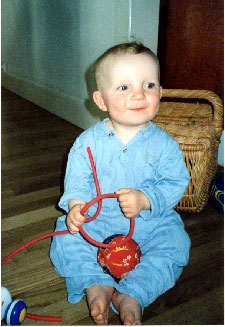
Figure 2. Hjalmar, 11 months old.
So, from a single photo, we can say a lot about this child and his perspectives. He is busy exploring the world of objects, but when some individual interacts, that social relation becomes more important or meaningful to the child than the objects he was exploring. Katherine Nelson (1996) suggests that children, bodily or verbally, tell stories to each other or to adults in order to share a culture and develop a self. Language and narratives are constructions in groups that make individual memories into shared conceptual systems. Human interaction and communication become superior to playing with objects, although young children spend a lot of time exploring objects.
Toddlers express themselves and communicate with their whole body, and their actions are as trustworthy as spoken language (Løkken, 2000). Løkken also claims that language can expand a child's experience but is never the experience as a whole. But whether children can express themselves verbally or bodily, they always seek meaning—and it is in the process of seeking meaning that the child's perspective becomes visible.
Let us look at a video observation by Pramling Samuelsson and Lindahl (1999, pp. 93-95), described below:
Yuta, the boy in the video, 13 months old, and Minori, the girl, 19 months old, are sitting next to each other on the floor in the middle of the room. In the background, the teacher is arranging something. Minori wears a colorful necklace around her neck, and she snatches another one that Yuta holds in his hand. Minori puts this one also around her neck. Yuta nods his head toward Minori. He bows again, lifts his right arm, and points. Minori looks at him, lifts her left arm, and points in the same direction. Both children are holding up their arms, pointing in the same direction. Yuta discovers the camera and watches while Minori is arranging her necklaces. Then Minori takes off her necklaces, letting them fall down behind her back. She takes one necklace in each hand, puts one in front of her and the other one around her neck. She picks up the first one and puts it around her neck as well. The teacher brings two more necklaces, shows them to Yuta, and puts them on the floor next to him. Yuta shows no interest in these two necklaces but grabs the necklace Minori is wearing around her neck and takes it off.
The teacher picks up another necklace, trying to create some distraction. Minori takes that necklace and now has one necklace in each hand. In his left hand, Yuta holds the necklace he took from Minori. He holds it in front of her, bowing. Minori answers by nodding her head. Yuta reaches forward, trying to take one of Minori's necklaces, but she snatches it away with a discouraging expression on her face. Yuta starts bowing intensely toward her, and Minori answers by bowing back in the same way. The children bow and nod their heads toward each other, and Yuta holds up a necklace and hands it over to Minori, bowing even faster. Minori answers by bowing back in the same way.
The teacher, who has been watching the children, is bowing in the background. Minori tries to throw a necklace around her own neck, but it falls off. She puts on another one. Yuta holds up another necklace, bowing. Minori puts on another necklace, looking up to the ceiling. Yuta throws away the necklace that he was holding in is hand and grabs the two that Minori is wearing around her neck. He bows and throws them away. Minori reaches out for them and takes them. Yuta bows toward her, and she bows back. They smile at each other. Yuta continues to bow, and then Minori offers him one of her necklaces. He accepts it, says "aaha," and points upwards, dropping the necklace. Minori follows his eyes and points too. Then Minori puts the necklace on again, looking around. Yuta takes up some of the necklaces from the floor and bows toward Minori. She puts on one necklace, while Yuta keeps bowing earnestly toward her. Then Yuta tries to do as Minori does, that is, he tries to put on necklaces. But when he tries, the necklace ends up next to his ear or on top of his head and falls off. Once again, he takes a necklace in his hand and tries to get it around his neck, without success. The necklace just slides off. Yuta tries over and over again, but he does not succeed. Minori is arranging her necklaces, and Yuta bows toward her. When Minori has managed to put on several necklaces, Yuta pulls all of them off. Obviously annoyed, Minori takes them back. Then Yuta hits her on her hand, takes the necklaces that Minori has in front of her, and puts them in his mouth.
A teacher interrupts the interplay.
Communication and Interaction
This observation of the toddlers could be interpreted in many ways, but just by pointing out a few issues, one can claim that these children are really trying to master a social situation through bodily expressions and interactions. They are also focusing on the necklaces, and the one child is discriminating and discovering differences between the two necklaces. He wants the one used by the other child, so he initiates the nodding and pointing to the other child. There is really a "tuning in" and nonverbal communication going on, which partly is very friendly and partly a little bit aggressive. The social interaction in terms of imitation and variation goes through the whole video sequence described by Lindahl and Pramling Samuelsson (2002). Both children also struggle to make sense of their communication and actions and thereby express themselves.
Toddlers and preschoolers often take the world for granted, and they do not always need words to communicate. Communicating with adults, however, is different—something Piaget told us many years ago (Piaget, 1973). Children are more equal to each other than to adults, which of course fosters different patterns of communication. Liv Germs (n.d.) shows in her research how children under the age of 4, in their spontaneous initiated communication with teachers, give background information, deepen comments, use mental words (e.g., wish, thought, knew), and talk about others' thoughts. The individual child's ways of opening up a communication is obvious, however—some children are skilled in expressing themselves if they have something to communicate and the adult is listening.
Children's ways of communicating with peers also differ from their communication with adults. According to Dion Sommer (2003), a child's communication is dependent on his or her relation to her own self and others. The study that he has carried out is based on observations of 120 children from all the Nordic countries. Children labeled as being socially competent are children who both are able to express their own feelings and meaning and are able to listen to and interpret peers' expressions. Three-fourths of these children are girls. Children in another group are also labeled as having "conformity patterns." These children are not able to express their own feelings and thoughts but can only listen to others. A majority of these children are girls.
The third group is labeled the self-articulate pattern group. These children can express themselves, but they are not able to listen to others. These are the children who we usually describe as extroverted or outgoing. Three-fourths of these children are boys. Finally, we have the social isolation patterns group—children who do not listen to others and who do not express themselves. They are only 7% of the children studied, but all of them are boys. These children are excluded by peers. Sommer claims that only 50% of the 5-year-old children in his study are socially competent in the way described here as being both able to express themselves and able to listen to others. Given these findings, a question comes to my mind: Why do we succeed with only 50% of the children given that preschool teachers by tradition claim that the preschool's most important contribution to a young child's life is the social aspect, which is developed there in interaction with peers? (Katz & McClellan, 1997; Pramling Samuelsson & Sheridan, n.d.).
The question of the teacher's role in giving children opportunities to both express themselves and listen to others then becomes a key question in early childhood education: Are we really fostering social competence, or is it just rhetoric, given that we know that social competence is important (Katz, 2003)? Questions all teachers can ask themselves is whether or not they really reflect about what it means to arrange opportunities for communication, both among peers and between children and adults, and what other factors are dealt with in social competence.
Experiences Influencing the Child's Understanding of the Surrounding World
Let us look at Calle's (age 5.6) story and think about his experiences of mathematics:
"I can make 3 into 24." "What do you mean?" asks the teacher. Calle tells her that if you have 3 pieces that you divide, you will get 6. If you divide these 6 pieces, you will get 12 because 6+6 is 12. And then, if you divide 12, you'll get 24. "But how did you know about this?" asks the teacher. "I have done it," answers Calle. "12 and 12 makes 24."
How is it possible for a child at the age of 5.6 years to engage in this thinking operation without any concrete objects? Calle happened to be participating in a preschool where his teacher employed certain principles related to basic mathematics in her classroom, such as:
- Focus children's attention toward aspects of the world that they want to develop their experiences of (in this case, basic notions within mathematics).
- Encourage children to imagine, think, and reflect about content related to the objectives of learning.
- Get children to express themselves and thereby make their own ways of thinking visible.
- Encourage diverse ways of thinking, expressed through drawing, creating objects, or verbally, and then use these expressions as content.
Here the teacher has worked with a clear idea of what basic mathematics means, but also with a specific approach to the act of learning, that is, how she thinks learning comes about (Pramling, 1990). By working systematically to direct children's attention toward certain objectives and using children's own ideas and reflections, teachers have helped young children develop astounding skills. (For an extended description of the teacher's way of working with mathematics and the children's learning, see Doverborg and Pramling Samuelsson, 1999, 2000, 2001.)
Another child, 7-year-old Mandis, talks about when she started compulsory school and was asked to tell someone what it was like to be in school: "It's fun at first, then it gets boring, and then you get used to it.."
What are Mandis's experiences? First of all, she has experiences from two school systems, preschool and primary school, and she is able to compare and value them in relation to each other (Pramling, Klerfelt, & Willams Graneld, 1995).
What a child tells us as adults is a question of our theoretical perspective, our willingness and skill to discover the child's experiences, the choice of experiences provided for children's learning, and the opportunities to engage and interest a child in certain topics. It is here that the crossroad between the individual and the collective becomes central—the point of intersection between each child's experiences and perspectives and the intentions of society stated in curricula (Pramling Samuelsson & Asplund Carlsson, 2003; OECD, n.d.).
An Example from an Age-Integrated Classroom
Monica Nilsson and Ulla Sundemo (2001, pp. 161-163), in their multicultural classroom (with children between 7 and 9 years old), mainly focus on working with characters from children's books as an asset for learning. They began with choosing a few books such as The Plant Interested Linnéa and The Handy Beaver Castor. Later on, the children chose the book The Ingenious Mulle Meck. The characters of these books were made in full scale (see some examples below).
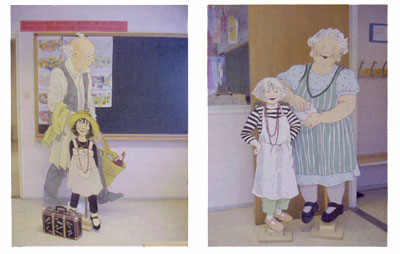
Figure 3. Full-scale models of figures from a children's story.
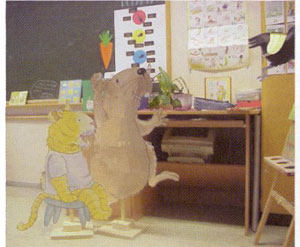
Figure 4. Full-scale models of figures from a children's story.
When you see these characters in the classroom, it is easy to understand why they trigger the children's fantasy and willingness to communicate with the characters as well as with others.
A trunk containing new letters from the characters, problems, or new equipment became part of the teaching strategy. The letters in the trunk made children become members of the "Reading and Writing Club" (Smith, 1995). They wrote letters to the characters and they got letters back, often with different problems to solve. Below we can see how two children are weighing the trunk, trying to find out what could be in it—just papers or something heavier?
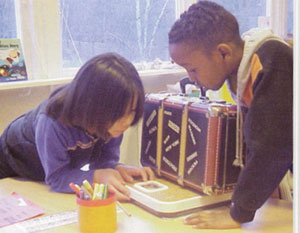
Figure 5. Children weighing a trunk.
On this day, there were mathematical problems to solve, as we can see in the picture below.
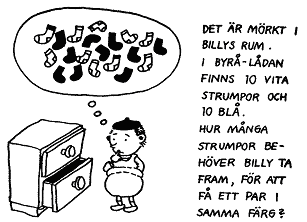
Figure 6. A mathematical problem for children to solve.
The problem presented was "It is dark in Billy's room. In the drawer, there are 10 white socks and 10 blue. How many socks does Billy have to pick up in order to get a pair of the same color?" Children came up with a large variety of solutions:
"He has to pick up 3." (boy, age 7)
"He needs to take 5 from the white and 5 from the blue." (girl, age 9)
"It's dark in Billy's room, so Billy must take 3 socks. And try them on." (boy, age 9)
"You can take 2 if you're lucky, or 3, then you will be sure to make a pair." (girl, age 8)
And, finally, Bej's very obvious solution: "Turn on the light!"
The teacher exposes children's different ideas as content in the teaching process—she uses a metacognitive approach, trying to get children to become aware of their different ways of thinking (Watkins, 2001).
This short description of a classroom is an example of how the teacher has clear intentions of providing children with opportunities to be engaged and active in sharing their own experiences and their own perspectives on topics related to the curriculum. These proceedings do not only focus on making children literate and able to solve mathematical problems. The work around these characters and literature brings in several other subject areas from the curriculum, such as nature and social science, as well as focusing on the children's learning processes. And I can assure you that in this classroom children are engaged and interested in the topic dealt with, and because of that interest, they both tell their own stories and listen to others' stories.
Conclusions
Quality in early childhood education today is very much related to communication and interaction; therefore, children's narratives or opportunities to tell their stories become central to quality. A child's ability to tell stories or express his or her opinions or perspectives is dependent on whether the child has relationships with other children and the teacher. But there also has to be openness and opportunities for the children to make choices. The teacher has to be competent in listening, supporting, and challenging the child (Siraj-Blatchford, 1999). The classroom also has to seethe with collective reflecting and sharing of ideas and meaning making. At the same time, the teacher must be skilled in directing children's attention toward important values, skills, and knowledge (Pramling Samuelsson & Sheridan, 1999). A rich experience for each child is also a necessary foundation for the child to be able to tell others about his or her own perspectives.
Finally, there has to be serious respect for the child's world. For example, we have to be aware of how a child's way of expressing herself is only a small fragment of the total experience or knowledge of the child. Let us look at the drawing below, made by Hjördis when she was 5 years old.
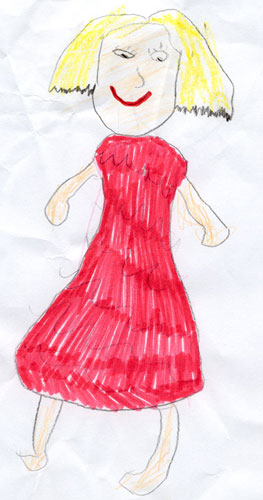
Figure 7. A mother, by Hjördis.
When Hjördis made this drawing, she said, "This is a mother!" I asked her how one can see that it is a mother. "Because she has lipstick and a skirt." I joked with her and said, "Then you do not have a mother, because your mother never wears a skirt or uses lipstick!" Hjördis nodded her head and said that I was crazy. She obviously knows a lot more about mothers. But if we within early childhood education just evaluate her drawing and her comments on the drawing from a Piagetian perspective, we could say that she is in the preoperational stage, understanding the world around her from external features. We always have to bear in mind that we only get to share fragments of a child's world or experience, which is important, especially when we evaluate or assess children's learning.
If we try to take the perspective of the child, the world is not divided between play and learning—the world is just something you have to make sense of. If children begin to distinguish between play and learning, it is because we as adults make that distinction. But everybody who has seen a 2-year-old child experiencing and exploring a kitchen cupboard knows that he or she continuously is shifting between play and serious exploration. To perceive a child as a playing, learning child means to discover the child's production of variation in his or her experiences. But also the teacher knows how to use variation as central to the learning process. Communication and interaction then go on at two levels. When children create their own play themes, they communicate around an object, but they also spontaneously use metacommunication in their approach. When the teacher is an active partner in the child's learning process, she creates opportunities to communicate, but she also helps children to change perspectives to a metacognitive approach. The production of variation then becomes central to the learning process (see Pramling Samuelsson & Asplund Carlsson, 2003). Finally, the teacher also has to show children that she trusts them and has confidence in them, in order to discover their stories.
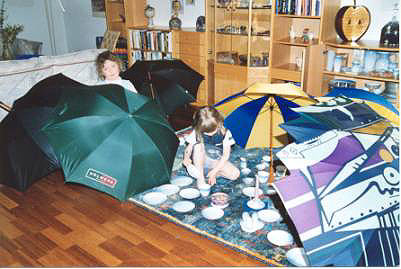
Figure 8. Frida (age 5) and Hjördis (age 6) are playing with fine china.
In this particular situation, Hjördis and Frida are trusting me as a grandmother—that they are allowed to play with the fine china. And I, on the other hand, when discovering the situation, had to trust them to be careful and to put the china back in the cupboard when they finished playing.
Acknowledgments
A version of this paper was presented at the European Early Childhood Education Research Association (EECERA) conference in Glasgow, Scotland, in September 2003.
References
Bronfenbrenner, Urie. (1979). The ecology of human development. Experiments by nature and design. Cambridge, MA: Harvard University Press.
Cleve, E. (2002). En stor och en liten är borta. Kristerapi med en tvåårig pojke. [A big and a small one have disappeared.] Stockholm: Wahlström & Widstrand.
Doverborg, Elisabet, & Pramling Samuelsson, Ingrid. (1999). Apple cutting and creativity as a mathematical beginning. Kindergarten Education: Theory, Research and Practice, 4(2), 87-103.
Doverborg, Elisabet, & Pramling Samuelsson, Ingrid. (2000). To develop young children's conception of numbers. Early Child Development and Care, 162, 81-107. EJ 610 326.
Doverborg, Elisabet, & Pramling Samuelsson, Ingrid. (2001). Children's experience of shape in space. For the Learning of Mathematics, 21(3), 32-38.
Germs, Liv. (n.d.). Hva lærer barn når de forteller? [What do children learn when they tell a story?]. Unpublished manuscript.
Katz, Lilian G. (2003). The right of the child to develop and learn in quality environments. International Journal of Early Childhood, 35(1-2), 13-22.
Katz, Lilian G., & McClellan, Diane. (1997). Fostering children's social competence: The teacher's role. Washington, DC: National Association for the Education of Young Children. ED 413 073.
Lindahl, Marita, & Pramling Samuelsson, Ingrid. (2002). Imitation and variation. Toddlers' strategies for learning. Scandinavian Journal of Educational Research, 46(1), 25-45.
Løkken, G. (2000). Toddler peer culture. The social style of one and two year old body-subjects in everyday interaction (197). Trondheim: Norges teknisk-naturvitenskapelige universitet, Pedagogisk institutt.
Nelson, Katherine. (1996). Language in cognitive development: Emergence of the mediated mind. New York: Cambridge University Press.
Nilsson, Monica, & Sundemo, Ulla. (2001). Vad händer i klassrummet när barnboksfiguren kliver in? In K. Nauclér (Ed.), Symposium 2000, Ett andraspråksperspektiv på lärande [Symposium 2000. Second language perspective on learning] (pp. 158-184). Stockholm: Nationellt centrum för sfi och svenska som andraspråk.
Organisation for Economic Co-operation and Development (OECD). (n.d.). Starting strong. Curriculum and pedagogies. Paris: Author.
Piaget, Jean. (1973). Språk och tanke hos barnet [The child's language and thought]. Lund: Gleerup.
Pramling, Ingrid. (1990). Learning to learn. A study of Swedish preschool children. New York: Springer Verlag.
Pramling, Ingrid; Klerfelt, A.; & Williams Graneld, P. (1995). Först var det roligt, sen blev det tråkigt och sen vande man sig. Barns möte med skolans värld. [It's fun at first, then it gets boring, and then you get used to it. Children meet the world of school.] Göteborg: Göteborgs universitet: Institutionen för metodik i lärarutbildningen.
Pramling Samuelsson, Ingrid, & Asplund Carlsson, M. (2003). Det lekande lärande barnet—en utvecklingspedagogisk teori [The playing learning child—in a developmental pedagogic theory]. Stockholm: Liber.
Pramling Samuelsson, Ingrid, & Lindahl, Marita. (1999). Att förstå det lilla barnets värld—med videons hjälp [To understand the little child's world—with the help of a video camera]. Stockholm: Liber.
Pramling Samuelsson, Ingrid, & Sheridan, Sonja. (1999). Lärandets grogrund. Perspektiv och förhållningssätt i förskolans läroplan [The basis of learning]. Lund: Studentlitteratur.
Pramling Samuelsson, Ingrid, & Sheridan, Sonja. (2003). Delaktighet som värdering och pedagogik. Barns perspektiv och barnperspektiv [Participation as assessment and pedagogy]. Temanummer av Pedagogisk Forskning i Sverige, 1-2, 70-84.
Pramling Samuelsson, Ingrid, & Sheridan, Sonja. (n.d.). Recent issues in Swedish early childhood education. Unpublished manuscript.
Siraj-Blatchford, Iram. (1999). Early childhood pedagogy: Practice, principles and research. In Peter Mortimore (Ed.), Understanding pedagogy and its impact on learning. London: Paul Chapman.
Smith, Frank. (1995). Between hope and havoc. Essays into human learning and education. Portsmouth, NH: Heinemann.
Sommer, Dion. (2003). Barndomspsykologiske facetter—en artikelsamling [Childhood psychological facets]. Århus: Systimic Academic.
Watkins, C. (2001). Learning about learning enhances performance. (National School Improvement Network Research Matters Series No. 13).London: Institute of Education, University of London.
Author Information
Ingrid Pramling Samuelsson is a professor and coordinator for early childhood education at the Department of Education, Göteborg University, Sweden. She has a background as a preschool teacher and got the first chair in early childhood education in Sweden in 1996. Her research mainly deals with how children create meaning and make sense of different aspects of the surrounding world, in the context of preschool (day care and kindergarten). Another research interest is teachers' professional development. Professor Pramling Samuelsson has been consulted by the Ministry of Education, the National Agency for Education, and the Department of Social Welfare and Health concerning questions about children.
Ingrid
Pramling Samuelsson, Professor
Göteborg University
Department of
Education
P.O. Box 300
SE-405 30 Göteborg
Sweden
Telephone:+46
31 773 2461
Fax: +46 31 773 2391
Email: ingrid.pramling@ped.gu.se

